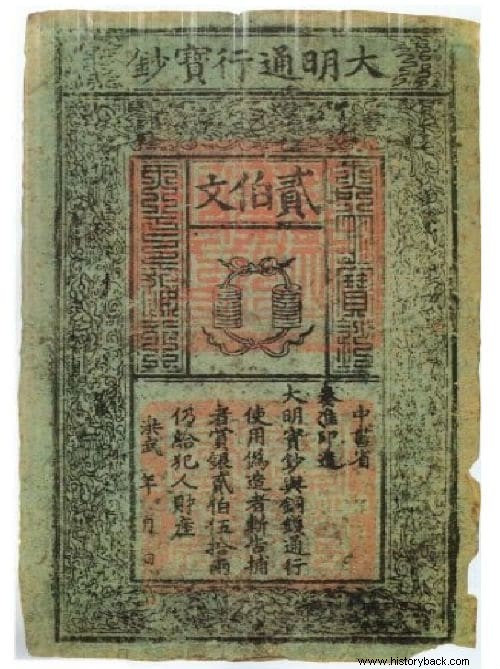The Chinese emperor Hien Tsung , of the Tang dynasty , was the first to impose in 807 the spread of paper "notes" to replace the copper, difficult to find, with which coins were usually minted.
The mechanism provided that the merchants paid their coins to the public Treasury office, receiving in exchange debt securities, called “ flying money ”.
A century later, again in China , the most important families began to issue exchange notes with a value equivalent to a certain amount of metal.
Payment at sight .
After a few decades, with the Sung dynasty (960-1279) the issuance of banknotes was regulated at the state level and with the Ming dynasty (1368-1644) the first banknotes were distributed whose payment was guaranteed on sight.
In Europe the first paper money was born in Sweden in 1661.
Image:
Chinese banknote from the Ming era (1368), made with mulberry bark, slightly larger than an A4 sheet.

